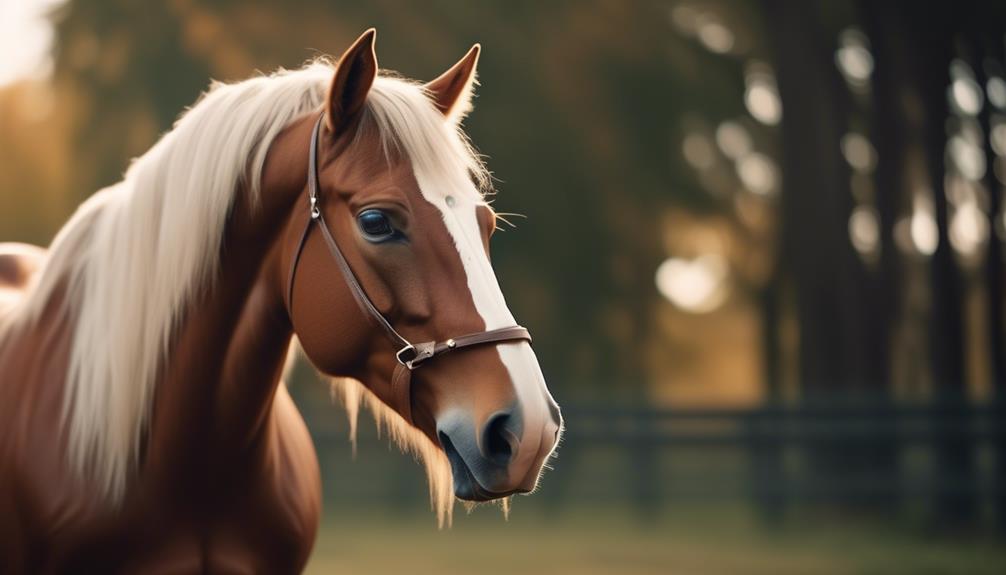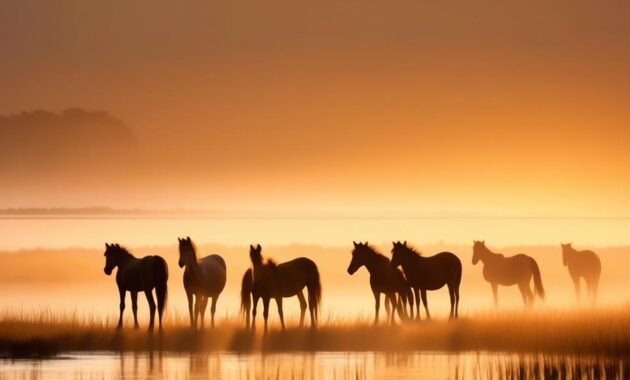
With a history dating back thousands of years, the majestic Barb horse breed has captivated horse enthusiasts around the world. Did you know that these magnificent creatures have influenced the development of multiple equine breeds? From the Andalusian to the American Quarter Horse, the Barb horse’s legacy is undeniable.
But what makes them so special? And how do their traits and grooming requirements differ from other breeds? In this discussion, we will uncover the fascinating characteristics of the Barb horse, leaving you eager to learn more about this remarkable equine companion.
Key Takeaways
- The Barb horse breed originated from the coastal region of Northern Africa, known as the Barbary Coast.
- There is controversy surrounding the Barb’s ancestry, with some suggesting a common ancestor with Arabian horses or Arabian as a predecessor.
- The Barb horse breed had a significant influence on racing breeds such as Appaloosa, American Quarter Horse, Mustang, Paso Fino, and Argentinian Criollo.
- Barb horses are known for their versatility, gentle temperament, and trainability, making them suitable for all levels of horse owners, trainers, and riders.
Barb Horse Breed Information
The key characteristics and traits of the Barb horse breed include its medium build and muscular physique, weighing between 900 and 1,000 pounds. It has a lifespan of 20 to 25 years. This breed is well-suited for all levels of horse owners, trainers, and riders. In terms of temperament, Barb horses are known to be eager to learn, gentle, docile, and willing.
The Barb horse breed originated from the coastal region of Northern Africa, specifically the Barbary Coast. However, there is some controversy surrounding its ancestry, with some suggesting a common ancestor with Arabian horses or Arabian as a predecessor.
Furthermore, the Barb horse breed has had a significant influence on various racing breeds, including Appaloosa, American Quarter Horse, Mustang, Paso Fino, and Argentinian Criollo. Today, Barb horses can be found in breeding locations such as Spain, Algeria, southern France, and Morocco.
Barb Horse Breed History

After gaining insights into the key characteristics and traits of the Barb horse breed, it’s important to delve into the fascinating history of this breed.
Here are three key points about the Barb horse breed history:
- Origin: The Barb horse breed originated in Northern Africa’s coastal region, known as the Barbary Coast. This area includes countries like Algeria, Morocco, and Tunisia.
- Controversy: There’s a debate about whether the Barb horse shares a common ancestor with Arabian horses or if it’s an Arabian predecessor. This controversy adds to the intrigue and mystery surrounding the breed.
- Influence: The Barb horse breed played a significant role in shaping other horse breeds. It was bred with Spanish horses to develop the Andalusian Horse and had an influence on racing breeds such as the Appaloosa, American Quarter Horse, Mustang, Paso Fino, and Argentinian Criollo.
The history of the Barb horse breed is rich and intertwined with various cultures and horse breeds, making it a breed with a captivating past.
Barb Horse Breed Traits

Barb Horse Breed Traits encompass a range of characteristics that make them versatile, trainable, and influential in the world of equine sports. With their exceptional versatility, Barb horses are used in various fields such as agriculture, military work, general riding, and competitive equine sports. They possess a remarkable trainability, displaying an eagerness to learn and adapt to different tasks.
Their gentle and docile temperament makes them well-suited for all levels of horse owners, trainers, and riders. Moreover, Barb horses have had a significant influence on racing breeds, including the Appaloosa, American Quarter Horse, Mustang, Paso Fino, and Argentinian Criollo.
With varieties such as the Moroccan Barb, Tunisian Barb, Abaco Barb, and Algerian Barb, these horses showcase their adaptability and prowess in different regions. Overall, the Barb horse breed stands out for its versatility, trainability, and impact on equine sports.
Overall Description of Barb Horse

With a powerful front, sloping hindquarters, and a medium or short back, the overall description of the Barb Horse showcases its impressive physique. This majestic breed possesses a profile that’s straight or slightly convex, adding to its regal appearance.
The Barb Horse’s body is built with a powerful front, emphasizing its strength and agility. Its croup is slightly angular or rounded, contributing to its well-balanced structure. The Barb Horse also boasts moderate or short ears, expressive eyes, a small muzzle, and a broad forehead, all of which enhance its overall appeal.
In terms of movement, this breed gallops like a sprinter, demonstrating its high stamina and agility. With its striking physical attributes, the Barb Horse truly stands out among other horse breeds.
Colors and Grooming Requirements

To maintain the Barb Horse’s health and appearance, regular grooming sessions are necessary. Grooming tools such as curry combs, shedding blades, dandy brushes, body brushes, hoof picks, mane brushes, tail brushes, and rub rags are essential for maintaining the horse’s cleanliness. It’s recommended to use equine shampoo and conditioner during washing, being gentle to prevent any skin or hair irritation.
The Barb Horse comes in a variety of solid colors, including brown, black, sorrel, chestnut, gray, and bay. However, the most common color seen in this breed is gray. Other colors such as buckskin, dun, grullo, roan, and tobiano can also be found, especially in the Spanish Barb variety.
Regular grooming not only helps to keep the Barb Horse looking its best but also strengthens the bond between the horse and its owner.
Frequently Asked Questions
Are Barb Horses Prone to Any Specific Health Issues or Genetic Conditions?
Barb horses, like any other breed, may be prone to certain health issues and genetic conditions. However, without specific context or information, it is difficult to determine the specific health concerns for the Barb horse breed.
How Does the Barb Horse Compare to Other Horse Breeds in Terms of Speed and Endurance?
The Barb horse is known for its exceptional speed and endurance, rivaling other horse breeds in these aspects. Its galloping ability, high stamina, and resistance to droughts make it a formidable competitor in competitive equine sports and racing events.
Can Barb Horses Be Used for Jumping or Dressage Competitions?
Barb horses can excel in jumping and dressage competitions due to their trainability and athleticism. Their agility, stamina, and willingness to learn make them suitable for these disciplines, showcasing the versatility of this majestic breed.
What Is the Average Price Range for a Barb Horse?
The average price range for a Barb horse varies depending on factors such as age, training, and pedigree. Prices can range from $1,000 to $5,000, with some high-quality, well-trained individuals costing even more.
Are There Any Specific Training Methods or Techniques That Work Best for Barb Horses?
There aren’t any specific training methods that work best for Barb horses. They are eager to learn and easy to train, making them adaptable to various techniques. Consistency, patience, and positive reinforcement are key.
What Makes the Barb Horse Breed Majestic?
The beloved clydesdale horse majestic power is evident in the Barb horse breed. Their strong, muscular build and sleek coat give them a regal appearance. With a history of being prized by royalty, the Barb’s graceful movements and powerful presence make them truly majestic.
Conclusion
In conclusion, the Barb horse breed is a truly majestic and versatile breed with a rich history and a lasting impact on equine breeds worldwide.
With their unique physical features and gentle temperament, Barb horses have excelled in various activities and continue to captivate all who encounter them.
Whether it be in agriculture, military service, or competitive equine sports, the Barb horse’s remarkable traits and enduring spirit make them a truly remarkable and beloved breed.




